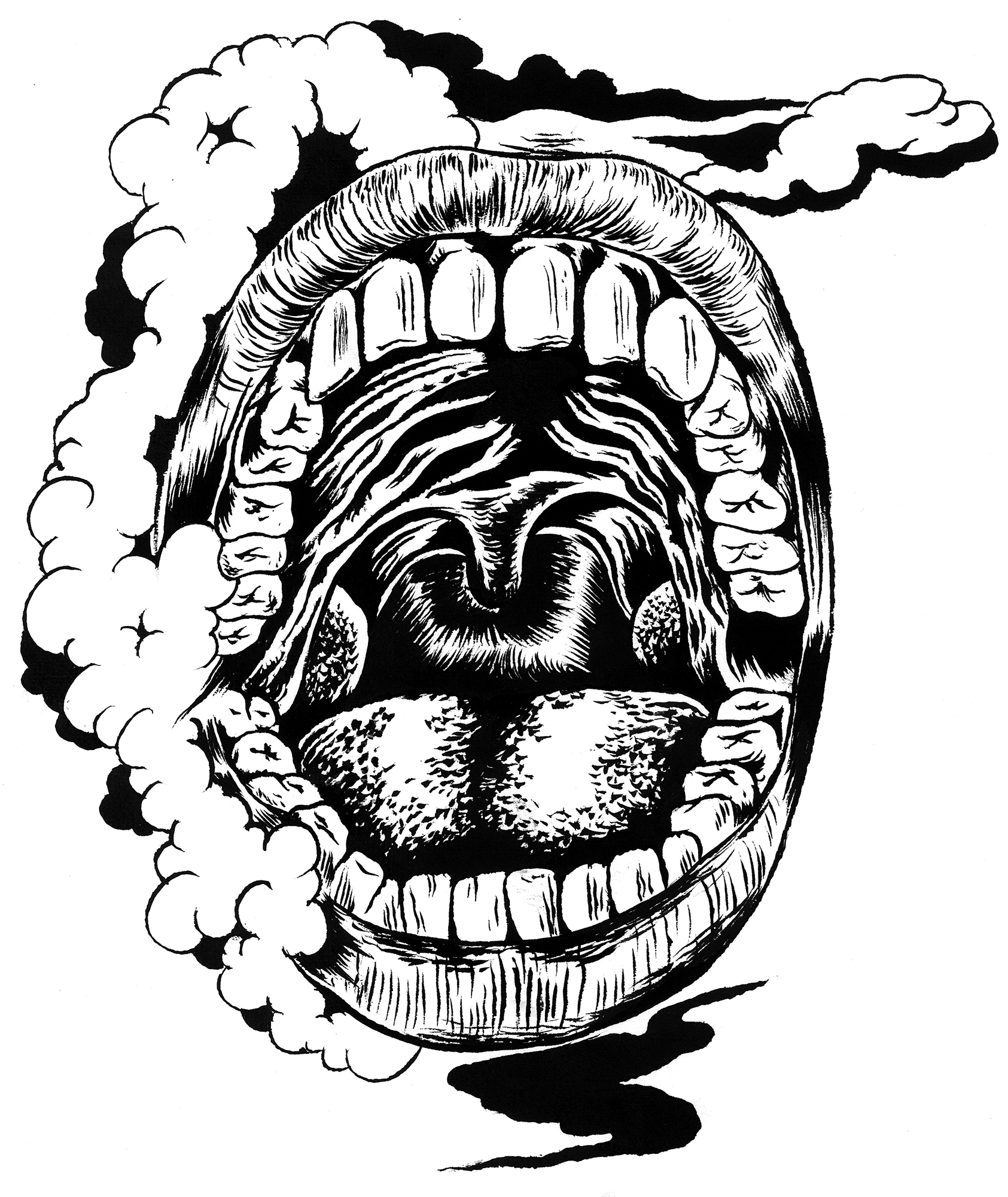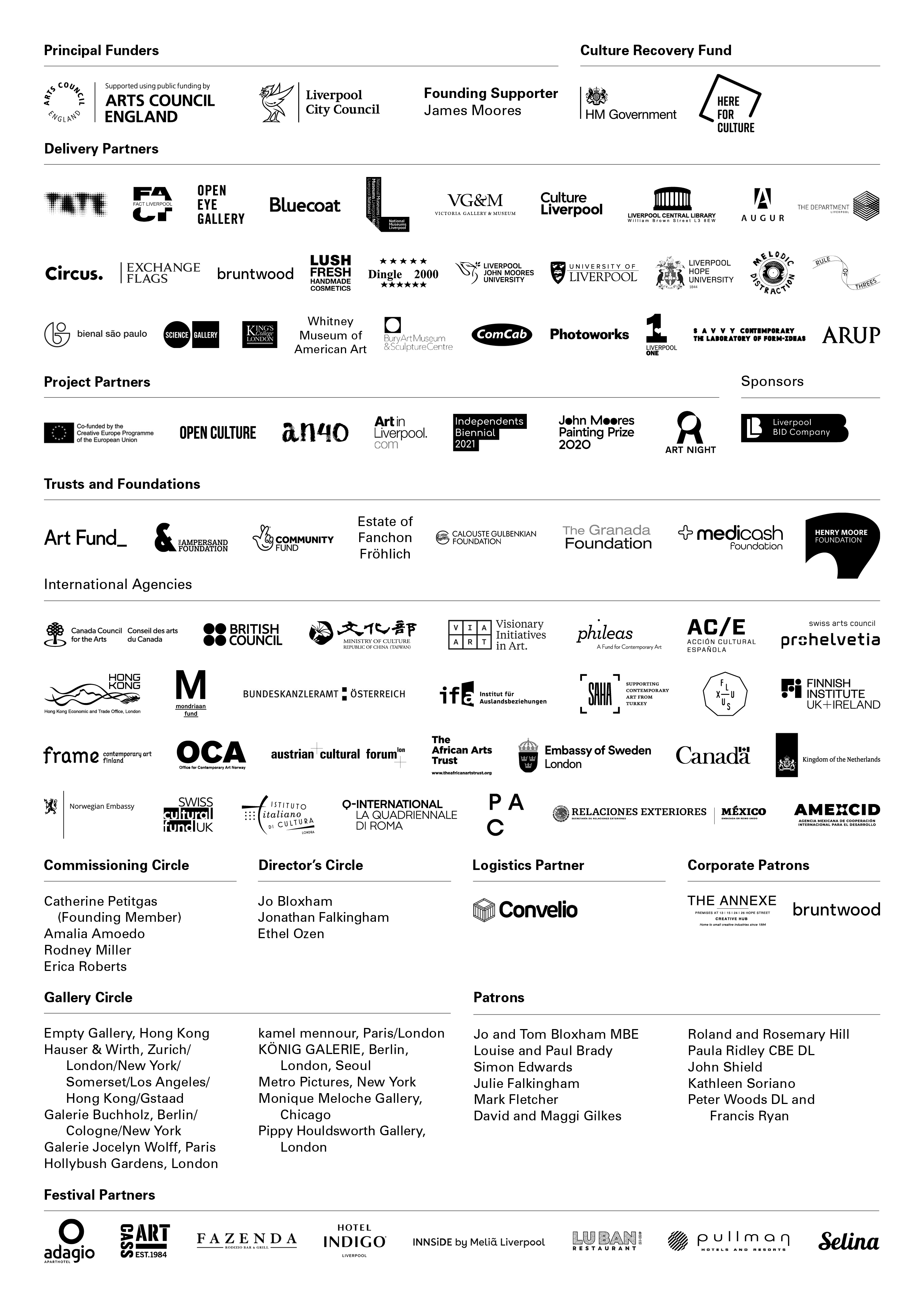The Stomach and the Port
The full exhibition programme for LB2021: The Stomach and the Port is now closed. Featuring nine major exhibitions across the city, in addition to the outdoor sculptures, online programme of sonic and digital commissions, films, events, podcasts and more, you can still visit exhibitions in person at FACT and Bluecoat, as well as Daniel Steegmann Mangrané’s outdoor sculpture La Pensée Férale (2021) currently in situ at Crown Street Park.
Alternatively, you can still experience LB2021 virtually through our series of VR exhibitions and curatorial tour videos. Hear from The Stomach and the Port curator Manuela Moscoso as she highlights artists at each Biennial venue and explore our full exhibition programme digitally.
Liverpool Biennial 2021 explores notions of the body. Drawing on non-Western ways of thinking, the 11th edition challenges an understanding of the individual as a defined, self-sufficient entity. The body is instead seen as a fluid organism that is continuously shaped by and shaping its environment. A plethora of artistic practices inform this edition: many of the artworks include sound, shun direct representation, de-stabilise gender categories or look at intense forms of contact. Liverpool, and its maritime history as a point of global contact and circulation, provides the perfect ecosystem to situate these enquiries.
The Stomach and the Port develops through three entry points – stomach, porosity and kin. The stomach is viewed as a primary organ engaging with the world. Porosity is embraced as a way of responding to borders or the strict contours of the skin. The notion of kin is revisited as a social tissue that prepares us for abundant futures.
The artists in this edition share concerns with the definition, invention and circulation of bodies and their knowledges. They engage with histories of contamination and gather together ways of understanding our bodies as zones capable of expansion: where agency can be distributed amongst beings, ideas of representation are substituted by forms of embodiment, and concepts of kinship extend beyond everyday human experience towards a more inclusive society.
The Biennial programme is presented in locations across Liverpool, including public spaces, historic sites and the city’s leading art venues: Bluecoat, Liverpool Central Library, Cotton Exchange Building, Exchange Flags, FACT, Dr Martin Luther King Jr Building, Open Eye Gallery and Tate Liverpool. New for 2021, Liverpool Biennial’s reach will also expand to the city’s historic Lewis’s Building and Lush Building.
Liverpool Biennial 2021: The Stomach and the Port is curated by Manuela Moscoso.
The following three Entry Point texts have been written by Writer and Curator Sara Demeuse, commissioned to help give more in-depth insight into the conceptual ideas and framework behind The Stomach & The Port. Each entry point can be explored further through a series of suggested audience Trails, available to view on the Visit section of this site, and through the public programme, Processes of Fermentation.








